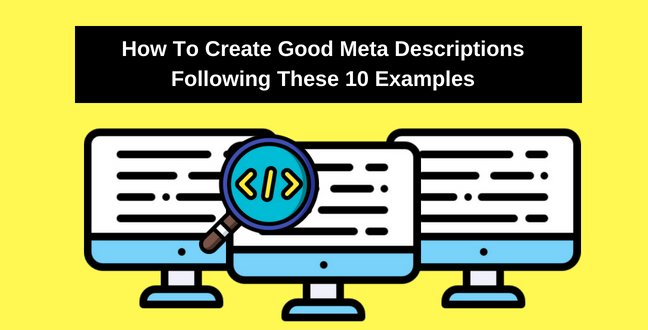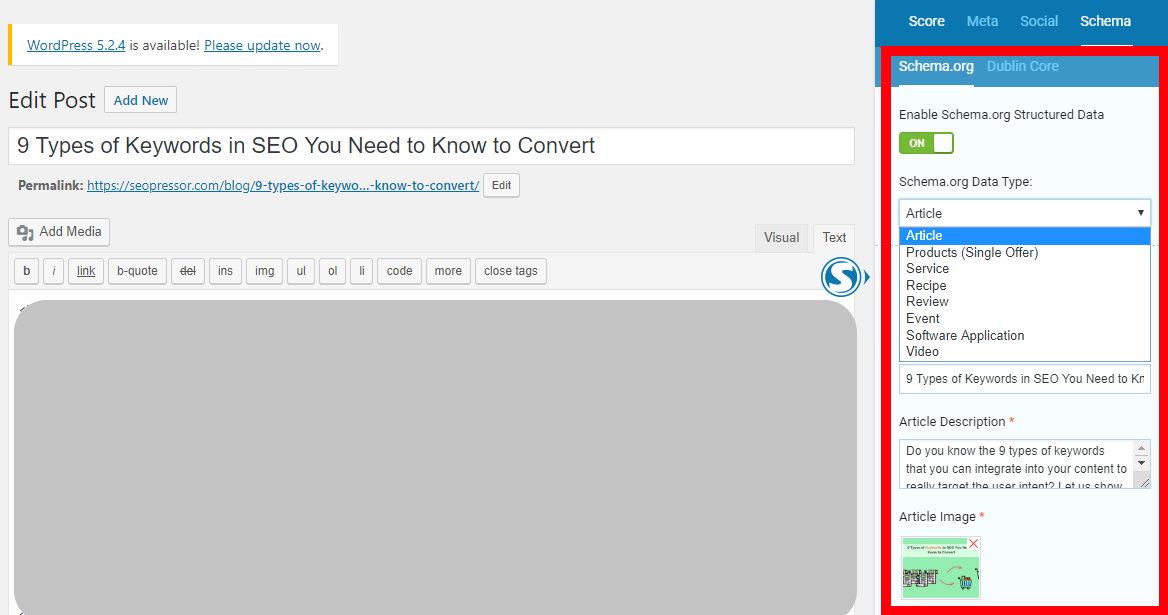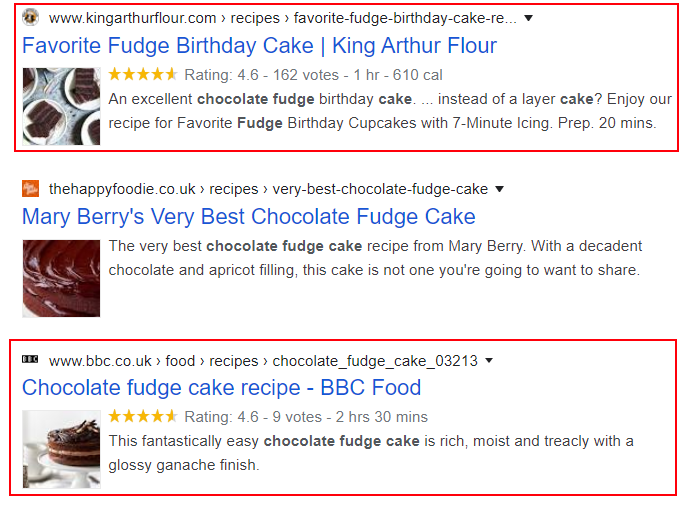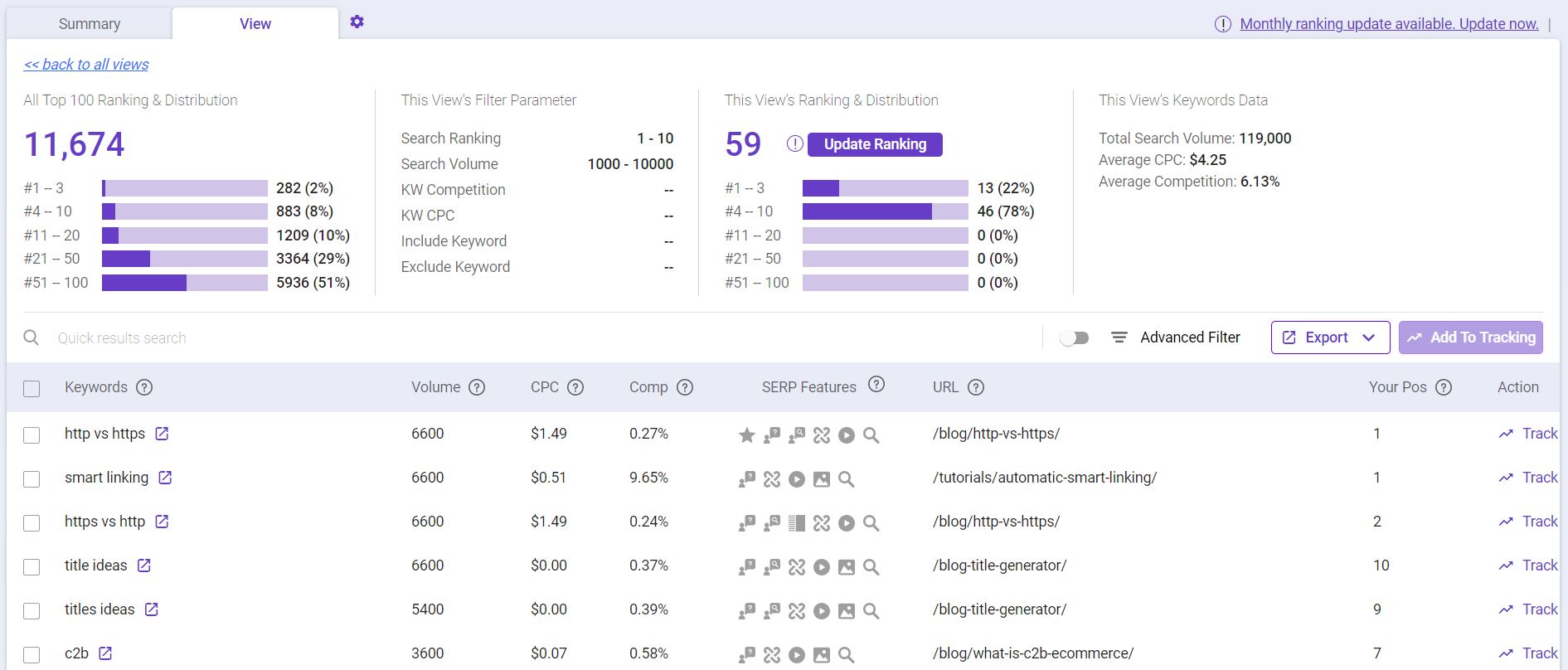Steph W. from SEOPressor


...help you check your website and tell you exactly how to rank higher?


91
score %
SEO Score

Found us from search engine?
We rank high, you can too.
SEOPressor helps you to optimize your on-page SEO for higher & improved search ranking.
By jiathong on November 11, 2019

When you appear as one of the results in Google first page results, there are two important factors that can influence your users to decide if they were to click on you.
One, of course, is your position on Google search engine result pages, if it is affected by Google ads.
Next, is the way you write your URL, title, and a good meta description.
At SEOPressor, we love to use the metaphor where your page is just like a book placed in the bookstore, the book cover would be the page title, the book spine is the URL while the synopsis at the back of the book is your meta description.
First, let’s clear this up.
We will let you know upfront that no, the meta description is not an SEO signal. However, a great meta description can drastically influence your click-through-rate (CTR).
And CTR is an important factor that is taken into account for the ranking. So if you don’t ramp up on your meta description assessment, you’re basically giving up on raking those CTRs.
So let’s get straight to the point, there are a few key points that can make a killer meta description:

Like all things SEO, the keyword makes an appearance. If you paid attention to descriptions on the search engine result page (SERP), you’ll notice that the keywords of the meta description input field are bolded.
Google bolds the keywords you typed into the search bar.
That’s Google’s way of telling us “Hey, here! This is what you’re looking for right? We got it right here!”
Well maybe in a less enthusiastic and more solemn tone.
Anyways, great meta description draws attention. And you want that attention.
If you are just starting out, it is always best that you target a keyword that has a reasonable search volume with lower competition.
You can find relevant keyword data using BiQ’s Keyword Intelligence.

If you are not sure which keyword to target, sort the keyword-based on its value. The higher valued keyword will give you higher traffic at a lower competition.
Other than the keyword’s value, you should also be able to take advantage of the other important metrics such as trend, volume, cost-per-click, competition, and intent.
These important metrics will help you better understand which related keywords to use to add to your meta description.
Go ahead and try Keyword Intelligence for free now!
There are tons of home page description that talks about the same thing. Tens and hundreds of other establishments that do the same business.
You want to stand out from the crowd.
If you pride yourself as the best grill in Rapid City, say it out loud. Or as loud as you can through the monitor anyway.
Tell them to dig into your signature buffalo meatloaf or gourmet mac and cheese.
It is an extension of your marketing efforts after all. Give it your best shot.
The whole purpose of having a meta description is to tell the audience what that page is about.
If the page is an article on how to jailbreak an iPhone X, make sure your meta description is about how to jailbreak an iPhone X.
How-to articles can especially benefit from a structured description that sneak peeks into the full-fledged instructions.
Which brings us to tip number 4.

You can use structured markup to create a rich snippet that is served at the meta description.
An example of a rich snippet would be recipes articles that usually boast a picture of the dish and a rating.

However, Google will be the one who decides whether or not to display your structured markup.
But it’s better to do something than nothing right? To implement structured markup wherever applicable, that way the search engine has more data to pull to create a more comprehensive meta description.
Here is how you can easily identify which keywords or phrases has rich snippet; using BiQ’s Rank Intelligence.
All you have to do is enter your domain into the rank checker tool and BiQ will do the rest for you. The next thing you will see is all the keywords you are already ranking for.

The product will show you if the keyword has any search features opportunities at the SERP Features column. These are some of the search features that you may discover:

Try Rank Intelligence for free now!
It’s easier to read something when it sounds like they’re talking to you.
It also sounds much more friendly and inviting. You’re not dealing with a stone-faced judge in court, you’re trying to tell someone to come to check out your website.
Loosen up those (metaphorical) lips and start talking without stuttering ok?
Read it out loud after you’re done writing your meta description. If it sounds weird or stiff, revise until it’s perfectly conversational.
Not sure how to write conversationally? Read our article later: How To Write In Conversational Tone To Increase Readership.
Now, here is the thing…
You may be writing conversationally, but readers may not feel the same. So, how do you make sure your content delivers the right sentiment to your readers?
Fortunately, you may use BiQ’s Content Intelligence to analyze the readers’ sentiment behind every line. All you have to do is insert your link and keyword. Then you’ll see your results returned like this:

Try Content Intelligence for free now!
Use phrases like:
“check out”, “you don’t want to miss”, “read more on” etc.
Compelling meta descriptions need to actively tell the reader to do something, and that something is to click on your page.
Using call-to-action is a good way to urge the reader to pay you a visit.
Of course, you need to first lay down the foundation of why they need to check you out. But after you get that nailed, slip in a call-to-action to spur them to action.
Check out our list of the top 10 most powerful words which can be used for titles and meta descriptions here.
Every page is unique, so your meta description text should be unique too.
Don’t reuse the same description for every single page.
If you’re gonna bulk upload the same meta description to every single page you have, you might as well leave it blank.
The thing is, if you leave the description tag empty, Google would actually generate one for you.
They try, they really do. But will a machine-generated description really fulfill the purpose? Is that what will drive in more clicks? No, I don’t think so.
The meta description character limit used to be 155, then 300, and back to the hundreds range at 160.
Ultimately, Google won’t tell us how long is too long or how short is too short. That left us playing the guessing game once again.
So how can we know that the meta description is just the perfect length?
The only way we can check for sure is when they won’t use the meta description you have written and instead opting for one they themselves generated.
So I would suggest you stay in the 160 characters range. If you make it too long, you risk getting cut off and not giving a strong enough impact.
Read more on meta description length here: Google’s Title and Meta Descriptions Length 2019
Some good, some bad, keeping that variety going so we can look at a broader picture.

Simple, cohesive, informative, straight to the point.
No big fancy words, they are the best at where they’re at, the end.

Here we see an example of a structured markup description.
From the image to the ratings and the promise of the recipe is a guaranteed crowd-pleaser, the meta description is crafted to our attention.
Which makes it much more compelling to click on the page and get the full recipe.

Here we have a meta description that gives a good sneak peek into what’s coming.
They give enough information that you know they are helpful. But not so much that you can know exactly what to do by reading it alone.

They sound friendly, enthusiastic and accommodating. I’d say pretty good for a car dealer.

Another example where the information is presented in a structured way.
We can easily get the most basic information from a glance. While the navigational links is a nice touch if we need more specific information.

At first glance, the summary appears structural.
But look at it, really look at it. Doesn’t it flow a bit unnatural?
On further inspection, we can see that the snippet displayed is not the that’s planned.

I would guess that this happens because of the rather short length of the planned meta description.

The phrase fishing charters are repeated 3 times in 2 lines of sentences.
That isn’t really pleasant to read nor informative isn’t it?

Am I reading a meta description or am I reading some sort of gibberish? Something must have gone wrong for it to show up like this.
Unfortunately for the company, I don’t think the click-through-rate will be really high.

Another unfortunate landscaping service that has its description in gibberish. I’d say it’s slightly better than the other one though.
But that sudden cut off at the middle is really not helping their service to sound that appealing.

It seems like a solid snippet, but look closer, why does step 1 jump right to step 4?
This can’t be right…
To conclude this blog post, let’s have a look at a quote from Danny Sullivan.
“…write short, concise meta descriptions that you think best describe your pages. Don’t fixate on a count, whether your beginner or pro.”
There you have it, the guide to writing a meta description from Google themselves.
Updated: 26 December 2025


Save thousands of dollars (it’s 100x cheaper)

Zero risk of Google penalty (it’s Google-approved)

Boost your rankings (proven by case studies)
Rank High With This Link Strategy
Precise, Simplified, Fast Internal Linking.
